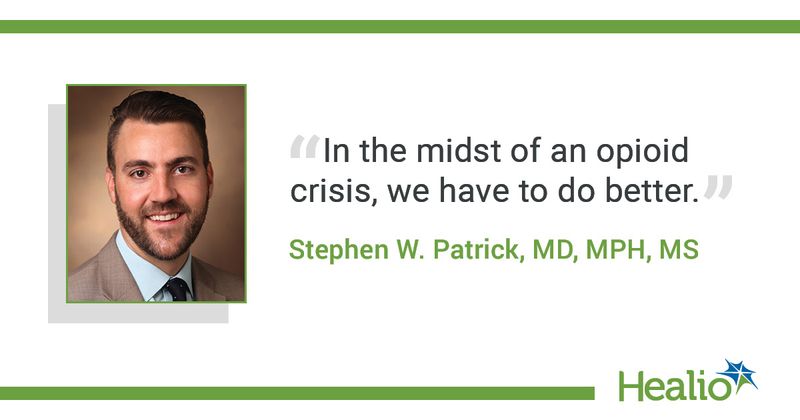Pregnant women face barriers to opioid use disorder treatment
Many women seeking treatment for opioid use disorder, particularly pregnant women, face significant barriers to receiving treatment, according to a study published in JAMA Network Open.
Researchers conducted a cross-sectional study where simulated patients — similar to “secret shoppers” — randomly called clinicians from outpatient clinics that distributed buprenorphine and methadone. The clinics were found in publicly available treatment lists from 10 different states.

Callers simulating 10,871 unique patient profiles reached out to 6,324 clinicians seeking opioid use disorder (OUD) treatment.
Among all women, 67.6% received an appointment with a clinician who prescribed buprenorphine. Researchers determined that 61.4% of pregnant women received an appointment compared with 73.9% of women who were not pregnant (relative risk = 0.83; 95% CI, 0.79-0.87). They did not identify a difference between women who were and were not pregnant in appointments with clinicians who prescribed methadone.
Among participating clinicians, 26.1% of buprenorphine-waivered prescribers and 32.5% of opioid treatment programs gave appointments to women when they agreed to pay for the visit in cash.
For those who agreed to pay cash, the median out-of-pocket cost for an initial appointment was $250 (IQR = $155-$300) for buprenorphine prescribers and $34 (IQR = $15-$120) for methadone prescribers.
Healio Primary Care spoke with study author Stephen W. Patrick, MD, MPH, MS, director of the Center for Child Health Policy and associate professor of pediatrics and health policy in the division of neonatology at Vanderbilt University School of Medicine, to learn more about the findings and the importance of OUD treatment in pregnant women.
Q: Why is it important for pregnant women to have access to affordable OUD treatment?
A: There’s good evidence that medications for OUD, including methadone and buprenorphine, improve pregnancy outcomes for women with OUD. Use of these medications reduce risk of relapse, overdose and overdose death for pregnant women and it makes it more likely that the pregnancy will go to term.
Q: Why did some physicians not accept insurance, but would accept cash payments, for OUD treatment appointments?
A: In our study, we are not able to tell why providers did not accept insurance, only that a large proportion did not. We found about a quarter of patients requesting appointments with a waivered buprenorphine provider could only get an appointment if they agreed to pay cash and about a third of patients requesting appointments at opioid treatment programs could only get an appointment if they agreed to pay cash. This is a substantial barrier for patients.
Q: What was the most surprising finding of your study?
A: If you take our findings together, the barriers for patients trying to get into treatment are staggering. First, about half the time when patients called for appointments they were able to reach a provider. Our callers called at least five times. Even when they did reach a provider, only about half were able to make an appointment on the first call attempt. Even after all of that, we found that pregnancy, insurance and the state women lived in were substantial barriers. In Florida, for example, after a woman reached a provider with either Medicaid or private insurance, they were only able to make an appointment with that insurance about 20% of the time.
In the midst of an opioid crisis, we have to do better.
Q: What concerns do physicians have with prescribing OUD treatments to pregnant women? Which treatments are most appropriate for this population?
A: I think many pregnant women find themselves in a situation where obstetricians may not be comfortable treating addiction and addiction medicine providers may not be comfortable treating pregnancy. This is a key place where we need more training, including more obstetricians and family medicine providers to be waivered to prescribe these medicines.
Ideally, either buprenorphine or methadone coupled with therapy and comprehensive well-woman care would occur for every woman. However, even the basic step of getting medications for OUD is not occurring.
Q: What efforts are needed to lower barriers to care in women with OUD?
A: First, we need to enhance training to ensure that women’s health providers are comfortable with addiction and that addition medicine providers are comfortable with pregnancy. But beyond that, we need a large-scale investment in treatment in the U.S. Overdose deaths continue to escalate. Perhaps now more than ever we need new federal investments and coordination to improve outcomes. We have done this before. The Ryan White Act for HIV is a great example of what we can do and serves as a potential model to enhance funding and coordination for opioid treatment in the U.S. moving forward.

